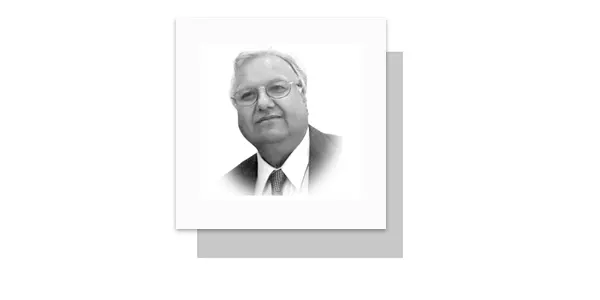RECENT conclusion of PTI’s “final call” has raised questions about the party’s future. Will it face a ban, or will its government in Khyber-Pakhtunkhwa come to an end? While answers to these questions are largely apparent, certain aspects still require consideration and understanding. Political action, dissent, or resistance in the face of perceived injustice is inevitable. Whether PTI has been subjected to such injustice is a separate debate, but for argument’s sake, let us assume it has. Resistance in such cases is a right, but the real question is: what kind of resistance?
Looking at Pakistan’s history, two notable examples provide context. Although distinct, they are relevant for understanding the current state of affairs. Historically, events following former Prime Minister Zulfikar Ali Bhutto’s execution stand out. After his execution, Bhutto’s sons founded Al-Zulfiqar, a group credited with several acts of terrorism detailed in Raja Anwar’s book “Dehshatgard Shahzada”. Had the Pakistan People’s Party (PPP) endorsed Al-Zulfiqar’s activities out of grief for Bhutto or declared, as PTI does today, that they had no stake in the state and would destroy it, PPP would likely have been reduced to a historical footnote. Many historians note that Benazir Bhutto consciously distanced the PPP from Al-Zulfiqar, ensuring the party remained within the political sphere, even during tough times. This decision prevented General Zia-ul-Haq and other adversaries from dismantling the party. Prominent right-wing journalist Muhammad Salahuddin was among PPP’s harshest critics. He authored a series of articles, later compiled into a book, recommending that PPP be declared a terrorist organization and banned. While such a ban could have been justified due to Al-Zulfiqar’s actions, PPP’s strategic restraint denied its opponents any such opportunity. Another example is that of Jamaat-e-Islami, a party advocating comprehensive revolution. Historically, revolutions often involve popular uprisings or violent confrontations. However, party’s founder, Maulana Maududi, firmly rejected violence or secretive methods. This stance prevented any reliance on power or subversive activities from the outset.
After Maulana Maududi’s death, Afghan jihad influenced some of Jamaat’s youngers, igniting a desire for violent change. Late Maulana Jan Muhammad Abbasi once shared that returning some fighters from Afghanistan independently pursued violent paths, including a cinema bombing in Lahore. This incident, a direct consequence of participation in the Afghan jihad, highlighted Maulana Maududi’s earlier opposition to such involvement. During his life, Jamaat and its student wing refrained from active participation in the Afghan jihad. Posthumously, party split into two camps: one adhering to Maulana Maududi’s principles and the other favouring militant activism in Afghanistan. The latter gained ground, but violent incidents, like the bombing, prompted a policy shift. Leaders like Mian Tufail Muhammad and Maulana Jan Muhammad Abbasi persuaded both the authorities and their party to avoid militant activities, sparing Jamaat from a potential ban.
Purpose of recounting these historical examples is to analyze the current state of PTI. Following its ouster through a no-confidence motion, PTI has increasingly leaned toward violence. Events of May 9 stand out, where multiple military installations were attacked nationwide. Before May 9, during an attempt to arrest Imran Khan in Lahore, party workers attacked police forces, using petrol bombs. Evidence also emerged of foreign nationals’ involvement. Earlier marches towards Islamabad, such as on November 24, also witnessed violent clashes with security forces, resulting in fatalities among law enforcement personnel. Records indicate that PTI supporters often participate in such protests while armed. Weapons, slingshots and axes were seen and confiscated during the November 24 protests. This violent trend also extended to Khyber-Pakhtunkhwa, where provincial police and government resources were reportedly used in such activities. Chief Minister Ali Amin Gandapur, both inside and outside the provincial assembly, openly incited supporters to violence. Such overt incitement is unprecedented, deeply influencing PTI workers. This escalation of violence has become a consistent feature of the party’s protests and sit-ins.
Another contributing factor to PTI’s violent inclinations is the ideological background of some of its active members. Conversations with party insiders reveal that many active workers previously belonged to armed groups motivated by the concept of Ghazwa-e-Hind. Some of these individuals, while not directly involved in past militant activities, hold firm beliefs in such ideologies. Records show their participation in violent activities during PTI protests. These elements have fostered a culture of aggression within the party. It appears that when the state moved to dismantle non-state militant actors, many of them found refuge within PTI. Serious political parties recognize and address such tendencies, as illustrated by the examples of PPP and Jamaat-e-Islami. PTI, however, has failed to distinguish between political and militant resistance, either due to ignorance or deliberate neglect. This failure has left the party facing a storm. Question of banning PTI remains separate. Decision-makers are acutely aware of the implications of such bans, making the likelihood of an immediate prohibition minimal. However, unless PTI fully adopts peaceful political practices, threat of a ban will continue to loom over it.
—This writer is former advisor to the president of Pakistan, author & mass media theorist.
(farooq.adilbhuta@gmail,com)










